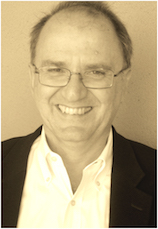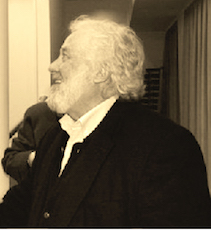
Proceedings
Programme
▪ Invited Speakers
Organization
info@sss8.cl
Invited Speakers
Keynote Speakers

Bill Hillier is Professor of Architecture and Urban Morphology in the University of London, Chairman of the Bartlett School of Graduate Studies, Director of the Space Syntax Laboratory in University College London and a director of Space Syntax Limited. He was the pioneer of ‘space syntax’ in the nineteen seventies, and authored The Social Logic of Space with Julienne Hanson (Cambridge University Press, 1984, 1990), Space is the Machine’ (CUP 1996), and over two hundred publications on space and other aspects of architectural and urban theory. Current research interests are in space syntax as a theory of the city, the relation between cities and urban societies, the syntax of generative buildings, the links between objective spatial laws and spatial cognition, and the space syntax paradigm as a philosophical position.

Alan Penn is Professor of Architectural and Urban Computing at The Bartlett School of Graduate Studies, University College London, and Director of the VR Centre for the Built Environment. He is Dean of the Bartlett. His research focuses on understanding the way that the design of the built environment affects the patterns of social and economic behaviour of organisations and communities. Current research includes the development of agent based simulations of human behaviour, the development of spatio-temporal representations of built environments, investigations of urban spatial networks and the application of these techniques in studies of urban sustainability in the broadest sense, covering social, economic, environmental and institutional dimensions.

John Peponis was born in Athens, Greece, 1955. Professor of Architecture and Associate Chair for Advanced Studies and Research, School of Architecture, Georgia Institute of Technology, USA. Collaborates with Kokkinou + Kourkoulas Architects. Research-journal publications address the geometric and computational foundations of space syntax; the cognitive and organizational performance of museums, work environments, healthcare environments and environments for learning; design formulation and design languages; urban layout and its functions. He wrote "Χωρογραφίες, ο Αρχιτεκτονικός Σχηματισμός του Νοήματος" (Alexandria Publishers, Athens, Greece) in 1997.
Three Latin American Cities

Alfredo Máximo Garay is an architect from the Universidad Nacional de Buenos Aires and Master in Urbanism and Territorial Ordering at the Universidad Libre de Bruselas, Belgium. Professor of Urban Planning at the Faculty of Architecture, Universidad de Buenos Aires, and has given graduate lectures in the Universidad de la República (Uruguay), Buenos Aires, Mar del Plata and in FLACSO. He is member of the Lincoln Institute where he is currently researching the Puerto Madero experience.
He was Undersecretary of Urbanism and Housing in the Province of Buenos Aires (2004 - 2008), Undersecretary of Planning of the city of Buenos Aires (1989 - 1992), Chief Director of the Strategic Guidelines for the Buenos Aires metropolitan area (2006 - 2008) and Vice-President and Director of the Antiguo Puerto Madero Corporation (2008 - 2011). Currently is Vice-President of the Metropolitan Foundation and works as a consultatn for the IDB.

Frederico de Holanda is an architect from the Universidade Federal de Pernambuco, Brazil, 1966, and PhD in Architecture at University of London, 1997. He retired in 2010 as Associate Professor, Faculdade de Arquitetura e Urbanismo, Universidade de Brasília, where he worked since 1972. He continues to contribute to its Graduate Program. Author of Exceptional space (2002), Brasilia: modern city, eternal city (2010), Oscar Niemeyer: of glass and concrete (2011) and organizer of Architecture & urbanity (2003, 2011). He investigates relations between building and urban configuration, public open space use, and socio-spatial segregation. He coordinated the design team of the Master Plan for the University Campus in Planaltina (University of Brasilia, under implementation) and a Revitalization Project for the W-3 Avenue in Brasilia (third prize in a national competition). He designed his own house in Brasilia (built, 1999), awarded an Honorable Mention by the Brazilian Institute of Architects. He coordinates the research group “morphological dimensions of the urbanization process”, registered in CNPq’s [Brazilian National Research Council], from which he receives a research grant.

Luis Eduardo Bresciani is an Associate Professor and architect of the Universidad Catolica de Chile, Master in Urban Design in Harvard. Has directed regeneration and development programmes in Chile and abroad. Has been Regional Secretary of Housing and Urbanism and National Director of the Urban Development Division. Has written several articles about urban growth locally and abroad.

Eduardo Rojas is a Professor of the Universidad Lusofona, Lisboa, Portugal, and an independent consultant on urban development. Former Principal Specialist in Urban Development and Housing at the Inter American Development Bank where he worked in the appraisal and implementation of housing, urban heritage preservation, municipal and urban development loans and technical cooperation projects. He also worked at the Regional Development Department of the Organization of American States, lectured at the Masters Degree Program in Urban Studies at the Universidad Católica de Chile and worked with the Urban Development Corporation of the Government of Chile.
He holds a degree in Architecture from the Universidad Católica de Chile, an M.Phil. in Urban and Regional Planning from the University of Edinburgh, UK and a MBA from Johns Hopkins University in the USA.
Architectural Practice

Andreas Kourkoulas was born in Athens, Greece, 1953. He is Associate Professor of Architecture, School of Architecture, National Technical University of Athens, Greece. Since the completion of his doctoral thesis at University College London in 1986, Kourkoulas' essays address architecture as a spatial mode of signification.
Maria Kokkinou was born in Athens, Greece, 1956. She is an alumnus of the School of Architecture, National Technical University of Athens and of the MS-Advanced Architectural Studies, University College London.
They both founded Kokkinou + Kourkoulas Architects and Associates in 1997. Built works include residential buildings, the Michaniki, Folli-Follie, Eurobank and Shop and Trade office complexes and the Benaki Museum at Pireos Street (Institute of Greek Architects Award, 2006). The work of Kokkinou + Kourkoulas has been published and exhibited nationally and internationally.

Sebastián Irarrázaval is an architect from the Pontificia Universidad Católica de Chile were he teaches from 1994. Has been invited to the University of Arizona, Universidad Central de Venezuela and MIT. He has received the following distinctions: the AOA award for the best young architect (1999), his office was nominated as one of the 101 world's most interesting offices by Wallpaper (2007) and his house Ochoalcubo recieved an award from the Instituto del Cemento y del Hormigón (2008).
Has given conferences internationally and participated in numerous biennials, including having represented Chile three times at the Venecian Biennial. His work has been published in specialized magazines such as ARQ, Casabella, Architectural Review, AV and A+U, and in several books, such as Atlas de la Arquitectura del Siglo XXI and 10X10X3 from Phaidon editorial. Among his most distinguished works are the Moro Showroom, the Centro Cultural Embajada Chile in Argentina and the School of Design and Institute of Urban Studies of the Universidad Catolica.
Spatial Cognition

Ruth Dalton is Professor at the Northumbria University and an alumnus of University College London. As a licensed architect, she has worked for Foster and Partners (London) and Sheppard Robson Corgan Architects (London). Key projects upon which she has worked include the Carré d’Art de Nîmes, in France, the Palaçio de Congresos in Valencia, Spain, and the Kings Cross International Terminal in London (unbuilt). She has taught at the Architectural Association, London, the Georgia Institute of Technology, Atlanta, USA and the Bartlett School of Architecture, UCL.
Her research interests are centered around the relationship between the spatial layout of buildings and environments and their effect on how people understand and interact in those spaces. She is an expert in space syntax analysis and is passionately interested in the use of virtual environments as a method for researching human factors in the built environment.

Christoph Hölscher is a psychologist by training, and an Assistant Professor at the Cognitive Science Center of the University of Freiburg, Germany. He is a principal investigator on two projects on architecture and human behavior in the SFB/TR8 Spatial Cognition, R6-SpaceGuide and I6-NavTalk. He is an honorary senior research fellow at the Bartlett School of Architecture, UCL, and a visiting professor at UC Santa Barbara.
His work focuses on the intersection of spatial cognition and architectural design. He is leading research on human wayfinding in built environments such as complex public buildings and urban environments. His applied research goal is to enable evidence-based design to address building usability requirements and improve our understanding of human spatial cognition.

José Manuel Allard carried out his undergraduate and master studies in the United States (BFA The Corcoran School of Art, Washington, DC / MFA California Institute of the Arts, Los Angeles, CA). He achived his Doctorate in Industrial Design and Multimedia Communication at the Polytechnic of Milan, Italy, where he was also lecturer and researcher at the Visual Communication Unit. His doctoral thesis dealt with the complexity of the navigation systems of public transport users.
Currently he works as a designer and academic at the Universidad Católica de Chile, directing various projects and consultancy in information design, wayfinding, visual identity and development of solutions for clients from the public and private realm. His research has been published in various national and international journals such as Information Design Journal (IDJ), Line Graph (Italy), ARQ (Chile).
He is currently an Associate Professor at the School of Design, Pontificia Universidad Católica de Chile.
Urban Space

Anne Vernez Moudon is Professor of Architecture, Landscape Architecture, and Urban Design and Planning; Adjunct Professor of Epidemiology and Civil and Environmental Engineering at the University of Washington, Seattle, and directs the Urban Form Lab (UFL). She holds a B.Arch. (University of California, Berkeley), and a Doctor ès Science (École Polytechnique Fédérale, Lausanne, Switzerland). She was President of the International Seminar on Urban Morphology (ISUF), and an Urban Land Institute Fellow. She is a National Advisor to the Robert Wood Johnson Foundation program on Active Living Research.
Her articles appear in urban design, transportation, and public health journals. Her books and monographs include Built for Change: Neighborhood Architecture in San Francisco (1986); Public Streets for Public Use (1991); Monitoring Land Supply with Geographic Information Systems (with M. Hubner, 2000); Master-Planned Communities: Shaping Exurbs in the 1990s (with B. Wiseman and K.J. Kim, 1992); and Urban Design: Reshaping Our Cities (with W. Attoe, 1995). She consults with organizations in Europe, Latin America, and Asia.

Roberto Moris is an architect from the Pontificia Universidad Católica de Chile and Master in City Design and Social Sciences, London School of Economics and Political Science, UK.
He has taught in schools of architecture at the Universidad Diego Portales and at the Pontificia Universidad Católica de Chile, and at the Institute of Urban and Territorial Studies, where he is the Deputy Director since 2007.
Between 2003 and 2007 he worked at the Ministry of Housing and Urban Development, where he was adviser to the minister, technical secretary of the Urban Reform and part of the Committee of Ministers of the City and Territory. He was also head of the Directorate of Urban Projects. Since 2008 he works as a consultant in strategic planning and at present, he is working for the World Bank and the IDB.
His areas of work are related to the management of urban projects, funding mechanisms and strategic plans for urban investment. In this line, his biggest project was the proposal for the Strategic Plan For Santiagos Inner Ring. His recent research studies have been related to multi-hazard risk analisis and urban planning, reconstruction planning, strategic plans for intermediate cities , public transport and street markets, regional planning and energy projects and carbon footprint mitigation planning.
Narrative

Sophia Psarra is Reader of Architecture and Spatial Design at the Bartlett, UCL, and editor of the Journal of Space Syntax. She was previously Associate Professor at the Taubman College of Architecture and Urban Planning, University of Michigan (2005-2010) and Lecturer/Senior Lecturer at the Welsh School of Architecture in Cardiff University (1997-2004). Her research interests are in the area of conceptual and perceptual spatial characteristics and their relationship with patterns of movement, use and cultural content. Her activities in these areas have resulted in publications, (Architecture and Narrative –The Formation of Space and Cultural Meaning, Routledge 2009), creative installations and design projects. She has collaborated with leading cultural institutions on layout design, exhibition narratives and visitors’ experience (The Museum of Modern Art, MoMA, New York, The Natural History Museum, London, The Burrell Collection, Glasgow, The Art Gallery and Museum, Kelvingrove, Glasgow, The Museum of Scotland, Edinburgh). As a practicing architect, she was part of a team that won first prizes in international architectural competitions (EUROPAN). Her work has been exhibited in Venice Biennale, the George Pompidou Centre, NAI Rotterdam, London, Berlin, Milan and Athens in Europe.

Fernando Pérez was born in Santiago de Chile in 1950. He graduated as an architect (Pontificia Universidad Católica de Chile) in 1977and was awarded the degree of Doctor Architect (Universitat Politecnica de Barcelona) in 1981. He has been an academic of the School of Architecture, Universidad Catolica de Chile, since 1974 and was entitled Professor in 1992. Since 2004 he runs the Doctorate Program in Architecture and Urban Studies and since 2007 the Cultural Heritage Centre. He was Head of the School of Architecture (1987-2000) and Dean of the Faculty of Architecture and Fine Arts (2000-2010). He has been Visiting Design Critic at Harvard University (1990), Simón Bolivar Professor at the University of Cambridge (2000) and visiting fellow at SCAS (Swedish Collegium for Advanced Studies). He has delivered lectures in many Chilean and foreign universities.
His research activity has been mainly focused on the theory and history of the architectural project. He has authored and co-authored ten books and many book chapters. His articles have been published both in Chile and abroad. He has also developed professional activities and some of his works have been exhibited or published in Chilean and international journals.